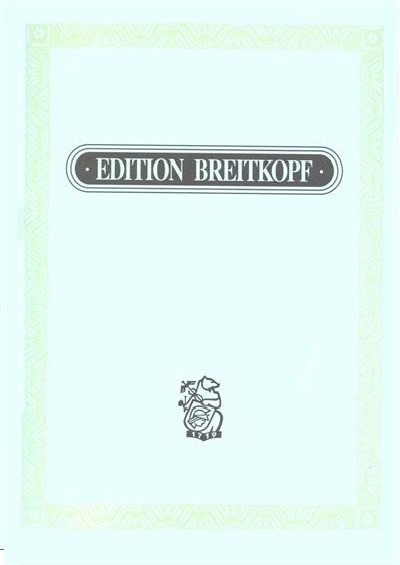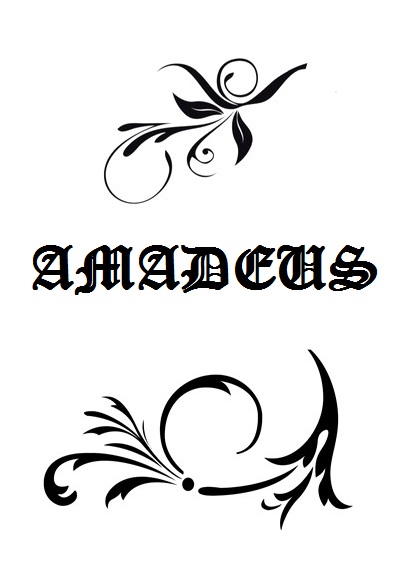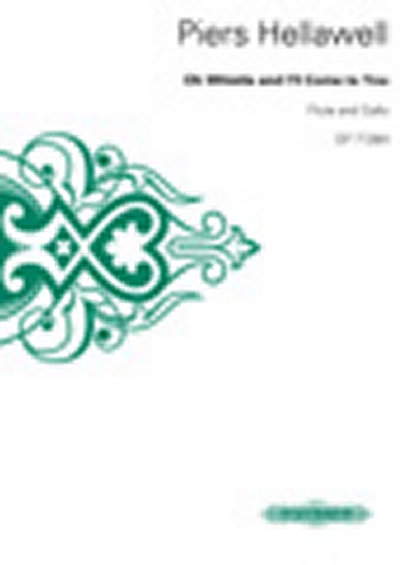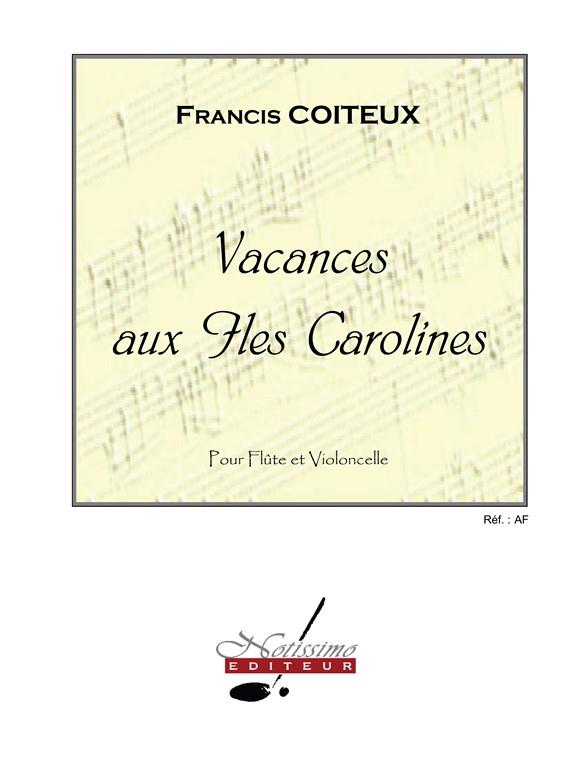Piranesi Suite BAEYENS AUGUST
Flûte Traversière et Violoncelle
Classique
Description :
August Louis Baeyens received his musical training at the Royal Flemish Music Conservatory in Antwerp, studying solfège, viola, and harmony. As a composer, Baeyens developed chiefly through the study of composers such as Debussy, Wagner and Strauss - this interest gave him the reputation of a revolutionary within the confines of the very traditionalist conservatory. However, this was not where Baeyens' exploration of musical language was to end. The 1956 Piranesi Suite for flute and cello, written three decades after Baeyens' graduation from the Flemish Conservatory, marks an intriguing phase of his composition. Baeyens tended towards older forms - the Suite, for example, is afive-movement work, though each movement is drawn through a more modern glass - it's hardly usual to hear a Sinfonia, Toccata, Moto Perpetuo, Aria, and Corrente together. The resemblance towards older forms breaks down as the music is further examined - the Sinfonia is full of transposed, repetitive melodies that play off each other with sly rhythmic twists (much in the manner of Stravinsky), the Toccata is a powerful solo cello showpiece, and the Aria is a delicate flute melody winding above bitonal cello pizzicato. The final Corrente, belying its name, brings the piece to a close with an accelerating back-and-forth of melody and accompaniment. August Louis Baeyens received his musical training at the Royal Flemish Music Conservatory in Antwerp, studying solfège, viola, and harmony. As a composer, Baeyens developed chiefly through the study of composers such as Debussy, Wagner and Strauss - this interest gave him the reputation of a revolutionary within the confines of the very traditionalist conservatory. However, this was not where Baeyens' exploration of musical language was to end. The 1956 Piranesi Suite for flute and cello, written three decades after Baeyens' graduation from the Flemish Conservatory, marks an intriguing phase of his composition. Baeyens tended towards older forms - the Suite, for example, is afive-movement work, though each movement is drawn through a more modern glass - it's hardly usual to hear a Sinfonia, Toccata, Moto Perpetuo, Aria, and Corrente together. The resemblance towards older forms breaks down as the music is further examined - the Sinfonia is full of transposed, repetitive melodies that play off each other with sly rhythmic twists (much in the manner of Stravinsky), the Toccata is a powerful solo cello showpiece, and the Aria is a delicate flute melody winding above bitonal cello pizzicato. The final Corrente, belying its name, brings the piece to a close with an accelerating back-and-forth of melody and accompaniment.
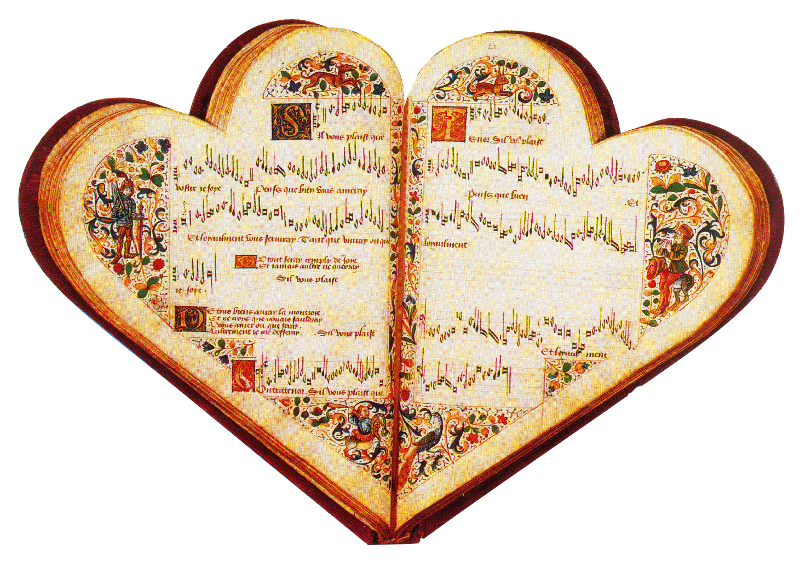
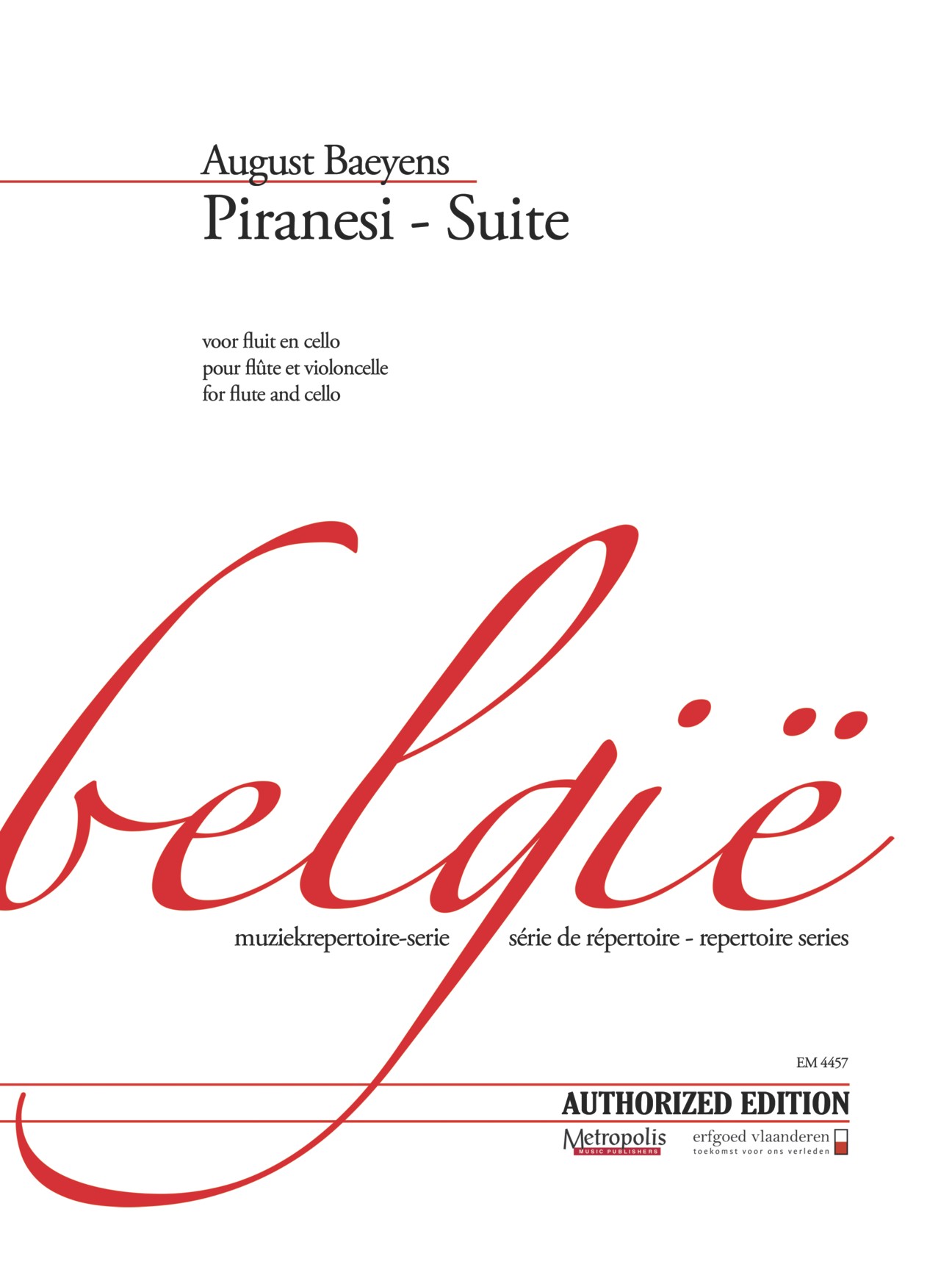

 Gagnez un bon d'achat dès 50€
Gagnez un bon d'achat dès 50€
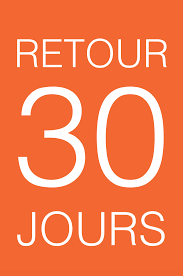 30 jours pour changer d'avis
30 jours pour changer d'avis

